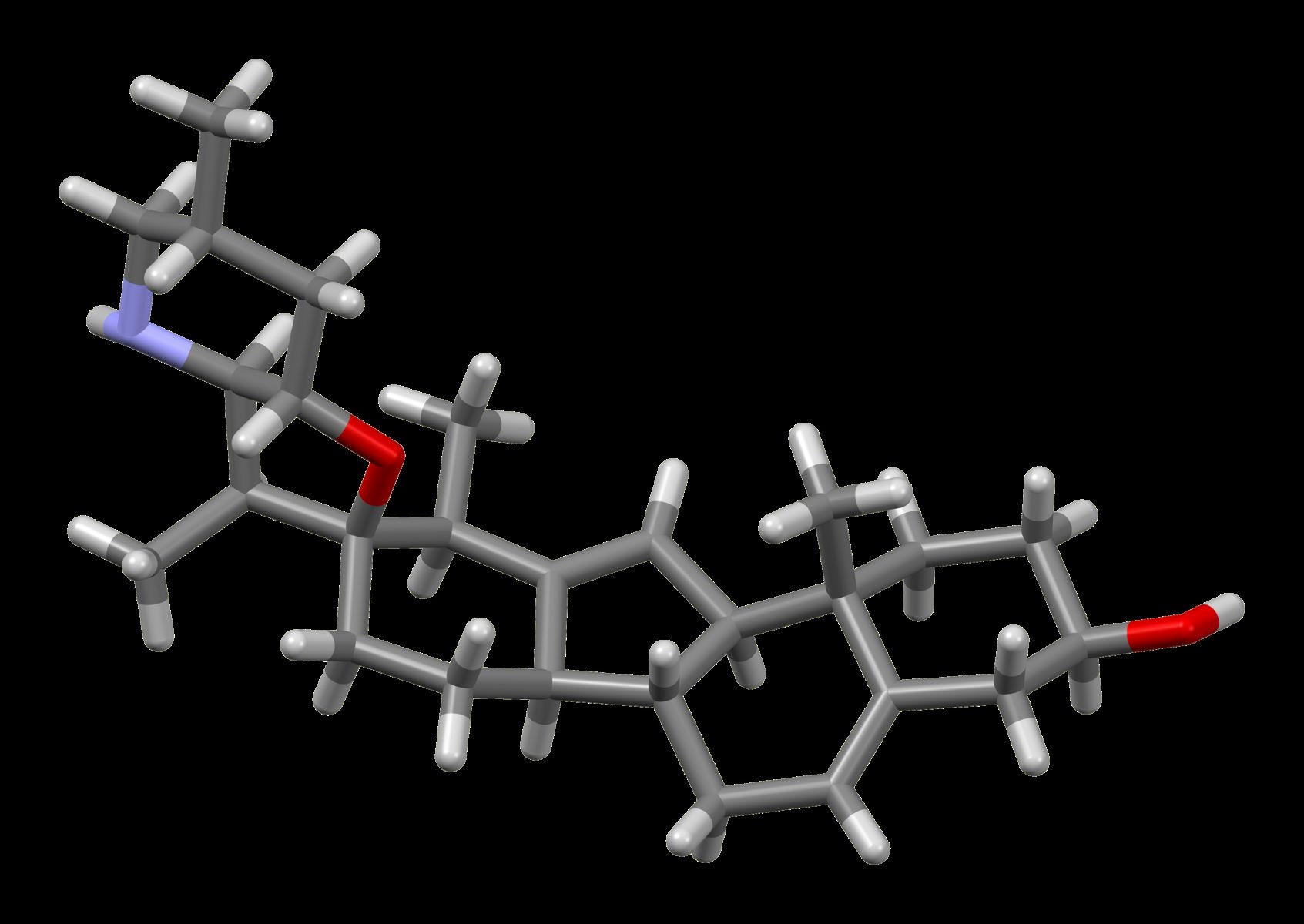
Cyclopamine is a fascinating compound with a story that reads like a science fiction novel. Found in the corn lily plant, this molecule has the power to cause severe birth defects, including cyclopia, where an embryo develops a single eye. But there's more to cyclopamine than its eerie effects. Scientists have discovered its potential in cancer research, particularly in targeting the Hedgehog signaling pathway, which plays a role in the growth of certain tumors. This dual nature—both harmful and potentially life-saving—makes cyclopamine a subject of intense study. Ready to dive into 40 intriguing facts about this mysterious compound? Let's get started!
Key Takeaways:
- Cyclopamine, found in corn lilies, can cause birth defects and has potential in cancer treatment. Its discovery has advanced teratology and genetic research, but poses risks during pregnancy.
- Cyclopamine's unique properties have led to exciting research in cancer treatment and regenerative medicine. Its impact on genetics and evolution provides valuable insights for science.
What is Cyclopamine?
Cyclopamine is a fascinating compound with a unique history and significant scientific importance. Derived from a plant, it has been the subject of extensive research due to its intriguing effects on biological processes.
- Cyclopamine is a naturally occurring chemical found in the corn lily plant, also known as Veratrum californicum.
- It was first discovered in the 1950s when sheep grazing on corn lilies gave birth to lambs with severe birth defects.
- The compound is named after the cyclops, a mythical one-eyed giant, because it can cause cyclopia, a condition where the embryo develops a single eye.
How Does Cyclopamine Work?
Cyclopamine's mechanism of action is complex and involves disrupting specific signaling pathways in the body. This disruption can lead to various developmental changes.
- Cyclopamine inhibits the Hedgehog signaling pathway, which is crucial for cell growth and differentiation.
- By blocking this pathway, cyclopamine can prevent the normal development of certain tissues and organs.
- Researchers have found that cyclopamine binds to a protein called Smoothened, which is a key component of the Hedgehog pathway.
Medical Research and Applications
Cyclopamine has been studied for its potential therapeutic uses, particularly in cancer treatment. Its ability to interfere with cell signaling makes it a promising candidate for drug development.
- Cyclopamine has shown potential in treating basal cell carcinoma, a common type of skin cancer.
- Studies suggest that cyclopamine could be effective against medulloblastoma, a type of brain cancer.
- Researchers are also exploring its use in treating pancreatic cancer, which is notoriously difficult to manage.
- Cyclopamine's ability to inhibit the Hedgehog pathway has made it a target for developing new cancer therapies.
Risks and Side Effects
While cyclopamine has potential medical benefits, it also poses significant risks, particularly during pregnancy. Understanding these risks is crucial for its safe use.
- Cyclopamine can cause severe birth defects if ingested by pregnant animals or humans.
- The most notable birth defect caused by cyclopamine is cyclopia, where the embryo develops a single eye.
- Other potential defects include cleft palate, limb abnormalities, and heart defects.
- Due to its teratogenic effects, cyclopamine is not suitable for use in pregnant women.
Historical Significance
The discovery of cyclopamine has had a profound impact on our understanding of developmental biology and teratology. Its history is as intriguing as its effects.
- Cyclopamine was first identified by Dr. Jim Gaffield, a veterinarian who noticed the birth defects in sheep.
- The discovery led to significant advancements in the field of teratology, the study of birth defects.
- Cyclopamine has been used as a tool to study the Hedgehog signaling pathway, providing insights into its role in development and disease.
Environmental Impact
The presence of cyclopamine in certain plants has implications for agriculture and livestock management. Understanding its environmental impact is essential for preventing accidental exposure.
- Corn lilies containing cyclopamine are found in the western United States, particularly in mountainous regions.
- Livestock grazing on these plants can suffer from birth defects, leading to economic losses for farmers.
- Efforts have been made to manage and control the growth of corn lilies in grazing areas to protect livestock.
Future Research Directions
Ongoing research aims to uncover new applications and improve our understanding of cyclopamine. The future holds exciting possibilities for this unique compound.
- Scientists are investigating cyclopamine analogs, which are modified versions of the compound with potentially improved therapeutic properties.
- Research is being conducted to better understand the molecular mechanisms by which cyclopamine inhibits the Hedgehog pathway.
- There is interest in exploring cyclopamine's potential in regenerative medicine, particularly in controlling cell growth and differentiation.
- Studies are also looking at the possibility of using cyclopamine in combination with other drugs to enhance its effectiveness in cancer treatment.
Interesting Facts About Cyclopamine
Cyclopamine's unique properties and history have led to some fascinating discoveries and anecdotes. Here are a few interesting tidbits about this compound.
- Cyclopamine is one of the few naturally occurring compounds known to cause cyclopia.
- The corn lily plant, which contains cyclopamine, has been used in traditional medicine by Native American tribes.
- Cyclopamine has a complex chemical structure, making it challenging to synthesize in the lab.
- Despite its potential risks, cyclopamine has inspired the development of new drugs targeting the Hedgehog pathway.
Cyclopamine in Popular Culture
The intriguing nature of cyclopamine has captured the imagination of many, leading to its mention in various forms of media and literature.
- Cyclopamine has been featured in scientific documentaries exploring the mysteries of birth defects and developmental biology.
- The compound has been referenced in academic papers and books discussing the history of teratology.
- Cyclopamine's discovery story has been highlighted in articles about the intersection of agriculture and science.
Ethical Considerations
The use of cyclopamine in research and medicine raises important ethical questions. Balancing its potential benefits with the risks is a key consideration.
- Ethical guidelines are in place to ensure that cyclopamine is used safely in research involving animals and humans.
- Researchers must obtain informed consent from participants when using cyclopamine in clinical trials.
- The potential for birth defects necessitates strict regulations on the use of cyclopamine in pregnant women.
Cyclopamine and Genetic Research
Cyclopamine has played a significant role in advancing our understanding of genetics and developmental biology. Its impact on genetic research is noteworthy.
- Cyclopamine has been used to study the genetic basis of birth defects and developmental disorders.
- The compound has helped identify key genes involved in the Hedgehog signaling pathway.
- Research involving cyclopamine has contributed to our knowledge of how genes regulate cell growth and differentiation.
Cyclopamine and Evolution
The study of cyclopamine has provided insights into the evolutionary processes that shape development. Its role in evolution is a fascinating area of research.
- Cyclopamine has been used to investigate how changes in the Hedgehog pathway can lead to evolutionary adaptations.
- The compound has helped scientists understand the evolutionary origins of certain birth defects.
- Research on cyclopamine has shed light on the evolutionary conservation of the Hedgehog signaling pathway across different species.
Cyclopamine's Impact and Future
Cyclopamine's discovery has reshaped our understanding of developmental biology and cancer research. This naturally occurring compound, found in the corn lily plant, has shown potential in treating cancers by inhibiting the Hedgehog signaling pathway. Researchers continue to explore its applications, aiming to develop targeted therapies that could revolutionize cancer treatment.
Despite its promise, cyclopamine's toxicity and side effects pose challenges. Scientists are working on modifying its structure to reduce these issues while maintaining its effectiveness. The journey of cyclopamine from a sheep teratogen to a potential cancer therapy highlights the importance of natural compounds in medical research.
As studies progress, cyclopamine may become a cornerstone in oncology, offering hope for more effective treatments. Its story underscores the potential of nature's compounds in advancing medicine and improving lives.
Frequently Asked Questions
Was this page helpful?
Our commitment to delivering trustworthy and engaging content is at the heart of what we do. Each fact on our site is contributed by real users like you, bringing a wealth of diverse insights and information. To ensure the highest standards of accuracy and reliability, our dedicated editors meticulously review each submission. This process guarantees that the facts we share are not only fascinating but also credible. Trust in our commitment to quality and authenticity as you explore and learn with us.


